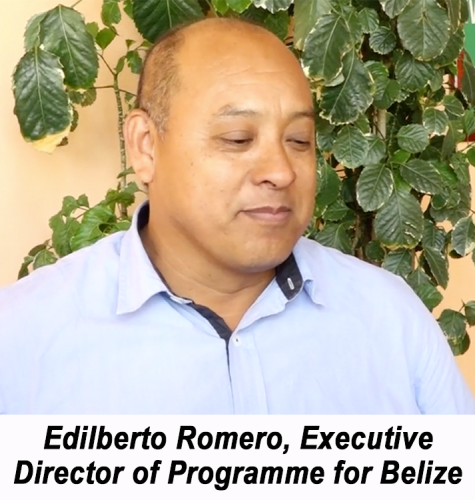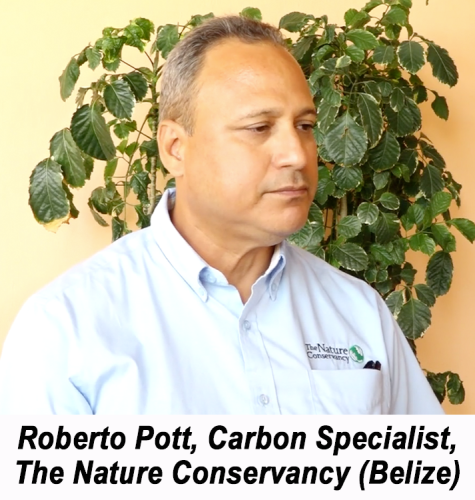Photo: Rio Bravo Conservation Area
Belize is a world leader in the carbon credit market, with the Rio Bravo Conservation and Management Area being one of the first 7 forest carbon offset projects in the world.
by Marco Lopez
BELIZE CITY, Thurs. May 25, 2023
Extending over Belize, northern Guatemala, and southeastern Mexico, the Selva Maya is said to be “the most extensive forest of Mesoamerica”. Programme for Belize (PfB) has managed the Rio Bravo Conservation and Management Area since 1995 – acquiring 250,000 acres within that tropical moist forest that would otherwise be logged. In the process, they created one of the first carbon offset projects in the world, Edilberto Romero, Executive Director of PfB, said in an interview this week.

“We are one of the pioneers, not only in Belize but in the world; our project is one of the first seven forest projects in the world that was designed and implemented to demonstrate that forest and conservation can be a part of the solution to the climate change problem,” Romero explained.
He was in attendance at the first National Carbon Symposium organized by the Belize Network of NGOs this week in Belize City. Local and international experts gathered to share information on carbon offset markets and programs, and Belize’s potential to contribute to local and international climate goals while benefiting economically.
The science is clear that human actions have been the main reason for the rapid climate change seen over the last 150 years. Heat is trapped close to the earth’s surface by greenhouse gases (GHG) – carbon dioxide, methane, and halocarbons. Carbon dioxide is the most prominent of the gases and is found everywhere. In the right quantities it helps the Earth retain heat generated from the sun, playing a key role in preserving life; in excess, it contributes to intense global warming which can destroy ecosystems and cause severe weather events, and even food insecurity.
Since the Industrial Revolution in the 19th century, carbon in the atmosphere has risen by about 30%. Burning fossil fuels and deforestation have been two primary reasons for the increase in atmospheric carbon over recent history, and has resulted in global temperature increase by about 2° Fahrenheit, according to NASA.
Under the United Nations Framework Convention on Climate Change (UNFCCC), countries around the world signed the Paris Agreement, pledging to come together to reduce and keep emissions as close to zero as possible or achieve “Net Zero.” One method of achieving this is a global reduction in the use of fossil fuels. Another is to utilize carbon sinks – natural ecosystems like forests and marine environments that store carbon to aid in the reduction of GHG in our atmosphere.
Carbon offsets are a form of climate action that enable individuals and organizations to provide compensation for the emissions they cannot avoid. They support projects that reduce emissions elsewhere, like the tropical forests in Belize. These climate action projects reduce GHG emissions by protecting the environment and not cutting down trees that store carbon, and increase carbon storage through land restoration and planting more trees.
A carbon credit is a transferable instrument that represents the reduction, or neutralization, of emissions through a carbon action project. It is best described as a unit corresponding to the removal of one ton of CO2, by the organization South Pole. When projects reduce, remove or avoid GHG emissions and adhere to the guidelines from experts at carbon market verification agencies like Verra or Gold Standard, they are granted these credits based on the amount of carbon removed and can sell these to organizations or individuals. Those credits are then to be retired and cannot be reused.

During an interview at the symposium, Roberto Pott, The Nature Conservancy’s local Carbon Specialist, said, “Unfortunately, there were some times when the market wasn’t really attractive. But as we get close to our targets, or wanting to meet our targets for 2030, we are realizing that we’re not meeting our targets to reduce the temperature change that we are seeing as a result of climate change, and these projects could help to contribute to that, while at the same time mobilizing finance for the management of resources that we benefit from here in Belize.”
Several private organizations are engaged in carbon projects within the country, Anna McMurray, Forest Carbon Technical Advisor for the Wildlife Conservation Fund, said in an interview with local media. McMurray said that these organizations have been successful and are selling carbon credits in the international market. She believes those carbon initiatives can serve as examples for not only Belize but the world.
Pott shared that Rio Bravo has verified and certified 1.6 million tons of carbon dioxide equivalent. Those offsets were sold to companies in the United States and Canada that currently own the carbon rights.
“We convinced them to donate a portion of their carbon offsets for us to sell as verified carbon units to establish an endowment fund of US$2.4 million dollars. That endowment fund has grown to US$3 million total and the interest that is generated for that is what we use for protection and management,” Romero explained.
While the carbon offsets market is still obscure for many, and has been focused on the protection and restoration of the forest or “green carbon sinks,” recent data has shown that marine environments, mangroves, seagrass, and saltmarshes – now referred to as “blue carbon”— are even more effective at sequestering and storing carbon.
“We think that the blue carbon market is wide open,” Pott said. “We’ll have some challenges. 80% of our coastal areas are privately owned, which just means that we have to work with the private landowners, and you have to create incentives, which again is a challenge. The government has to partner with private landowners and the carbon developers to make sure that when you share the benefits, all feel like they’ve walked away without losing,” Pott said.

